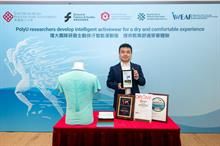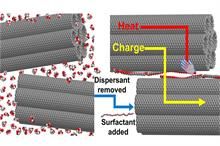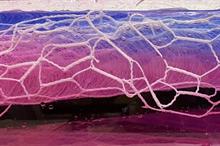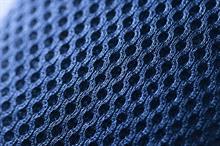
11th Jul 2024
The iActive sportswear, developed by the researchers of PolyU's school of fashion and textiles, integrates nature-inspired technologies like an electrically activated perspiration system and root-like liquid transport to efficiently manage sweat. This innovative garment reduces weight and stickiness caused by sweat accumulation during exercise.

6th Jul 2024
New research from the Universities of Bristol and Bath has introduced conductive threads in garment seams for electrical circuits that detect body movements via resistance changes. Presented at DIS conference in Copenhagen, this innovation enables advanced digital clothing for precise motion sensing, potentially enhancing exercise and rehabilitation.

21st Jun 2024
Sinbon and Makalot have joined forces to offer a comprehensive soft electronics/textile platform for global brands, starting with a smart EMS home fitness suit developed with a US startup. This suit integrates EMS technology into a machine-washable garment. Future plans include expanding textile wearables across medical, industrial, and consumer...

19th Jun 2024
Nautilus Defense has achieved a breakthrough in electronic textiles by successfully attaching chiplets to embroidered conductive yarns at a record 180µm pitch. This advancement paves the way for scalable production of fabric-based sensor systems. The technology, developed in Rhode Island, aims to enhance national security and create economic...

23rd May 2024
Nakamura's team at NAIST develops a new method for dispersing carbon nanotubes (CNTs) in fabric, enhancing thermoelectric generator efficiency. Using glycerol and a surfactant, they align CNT bundles, improving electrical conductivity while suppressing heat transfer. This method yields a power factor three times higher than previous techniques.

9th May 2024
DITF and ARIS have developed a space-saving, durable greywater treatment system using 3D spacer fabric, aimed at maximising water reuse. The modular design adapts to various building structures and can even be integrated into densely populated urban areas. With low maintenance and long lifespan, it promotes sustainable water use and circular...

24th Apr 2024
NC State researchers merge 3D embroidery and machine learning to craft a fabric-based touch sensor. The triboelectric device, powered by friction, integrates into clothing, enabling touch control of electronic devices. Machine learning aids gesture recognition, enhancing accuracy. While in early stages, the sensor showcases potential in wearable...

22nd Apr 2024
Loughborough University's Wolfson School of Mechanical, Electrical, and Manufacturing Engineering is leading the development of nanogenerator technology for cost-effective and health-monitoring apparel. Their recent progress involves 3D-printed Triboelectric Nanogenerators (TENGs), designed to harvest energy from motion for sensing purposes.

12th Apr 2024
A team from China and Singapore has developed a smart fibre that can emit light and generate electricity without being plugged in and may address the problems of silicon-based textile systems. The fibre enables wireless visual–digital interactions without the need for extra chips or batteries on textiles. The discovery was reported in the journal...